Content
- When is the sex of a plant determined?
- Signs of a male plant at the vegetative stage
- How do you avoid male plants?
When is the sex of a plant determined?
The sex of cannabis plants begins to appear long before the active flowering phase. During the vegetative stage, the plants do not yet have formed sex organs, but about 4-6 weeks after germination, the first early signs of sex can be seen. This period is called pre-flowering, and it is at this time that it becomes possible to determine the sex of the cannabis herb.
What affects the speed of gender manifestation?
Certain factors can speed up or slow down the process of cannabis sexual characteristics:
- Genetics. Sativa, indica and hybrid varieties show sex at different times. Sativa plants often take longer to grow and show sexual characteristics later.
- Photoperiod. With 18/6 or 20/4 growing light, the sex of cannabis bushes is determined later than with a shortened light cycle.
- Stress. Growboxes with unstable conditions, transplants, and sudden temperature changes can delay the pre-flowering stage.
How to determine the sex before flowering?
At pre-flowering, male cannabis plants begin to form small rounded masses in the nodes of the stem. These are the rudiments of future pollen sacs that will later open and pollinate the female plants. Female plants, on the other hand, develop small hairs, the pistils, which are part of the future buds.
The main early signs of a male plant:
- Small round structures (future pollen sacs) are formed in the nodes.
- The internodes are longer than in female plants.
- The bush grows taller and faster than its female counterpart.
- The foliage is sparser and the bush structure is less dense.
How to distinguish the male plant in different varieties?
In autoflowering and regular varieties, the sex of the plant before flowering is determined in the same way, but feminized seeds virtually eliminate the possibility of male specimens. Sativa-dominant hybrids may show signs later, while indica may show signs a little earlier.
Recognizing the sexual characteristics of cannabis early on is an important skill for growers. This will allow you to remove male plants in time, avoid pollination of female plants and save your harvest.
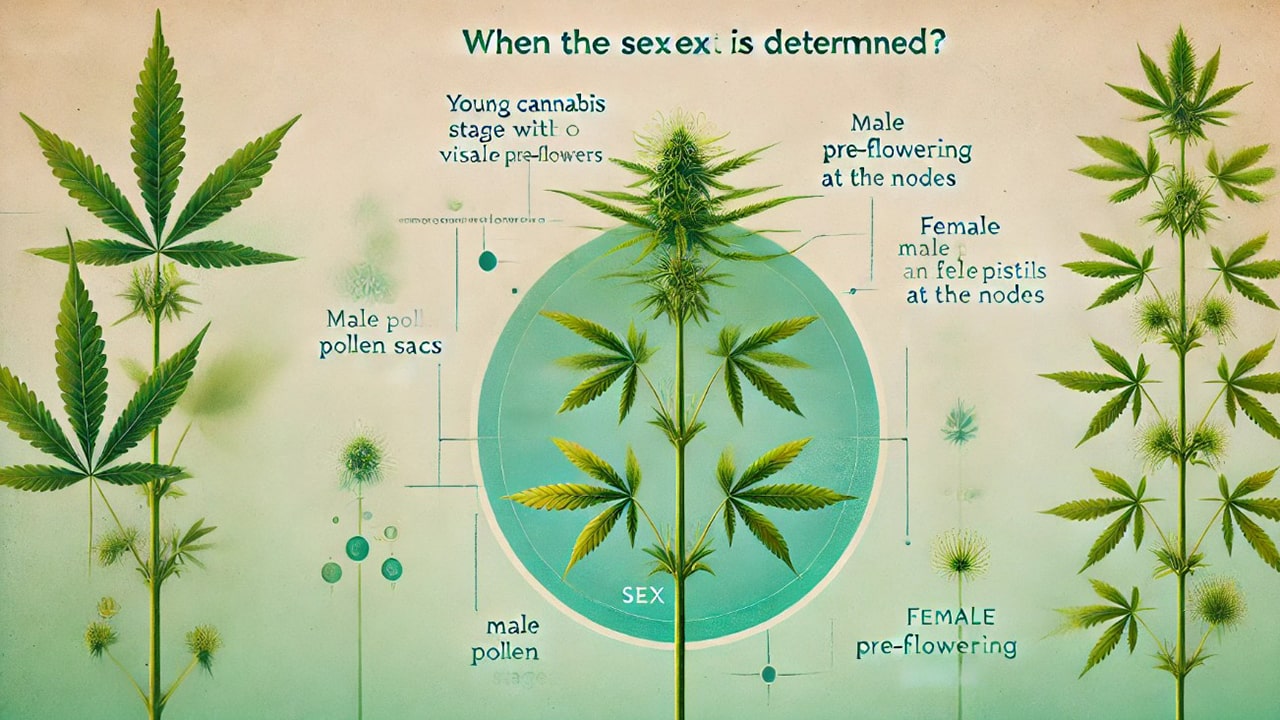
Signs of a male plant at the vegetative stage
Male and female cannabis plants develop differently during the growing stage. Male cannabis plants grow faster, have longer internodes and produce pollen sacs before flowering is complete. Determining the sex of the cannabis plant during this period can help avoid accidental pollination and preserve the crop.
How to recognize a male plant at an early stage?
To accurately determine the sex of a plant before flowering, it's important to pay attention to a few key signs. Male cannabis plants are different in appearance and form sex organs differently than female plants.
Shrub structure
- Male plants, especially sativa-dominant varieties, tend to be taller and more elongated.
- Indica, even in its male form, retains a more compact structure, but is still noticeably taller than its female counterparts.
- The internodes (the distance between the nodes on the stem) are longer in male plants, while in female plants they are shorter and denser.
Foliage and branching
- Male cannabis plants have fewer side branches. They do not tend to develop a lush crown as their job is to produce pollen.
- The leaves of male plants are often sparser, making them less dense than female plants.
- Indica usually have broad and dense leaves, but even a male plant will have them sparsely arranged.
First sexual signs
- In male plants, tiny rounded masses - the rudiments of future pollen sacs - begin to appear at the nodes (the places where branches connect to the stem).
- Female plants form fine white hairs (pistils) in these places.
- These signs become visible in the pre-flowering stage of cannabis, about 4-6 weeks after seed germination.
Growth rate
- Male shrubs often outgrow female shrubs, especially in the first stages of development.
- This is due to the fact that in the wild their task is to rise above the female plants and spread pollen.
Difference between male and female plants in different varieties
Different genetic lines of cannabis exhibit sex characteristics differently:
- Indica: Generally stocky and compact, but males can be slightly taller than females. Sexual signs appear earlier.
- Sativa: Males are significantly taller than females, with sex signs appearing later.
- Hybrids: Behavior depends on dominant genetics. Autoflowering and regular strains have similar traits, but autoflowering strains show sex slightly earlier..
By recognizing the signs of a male plant during the growing season, you can remove it in time and prevent pollination of female bushes. This is especially important when growing indica, as its dense structure can retain pollen, reducing the quality of the harvest.
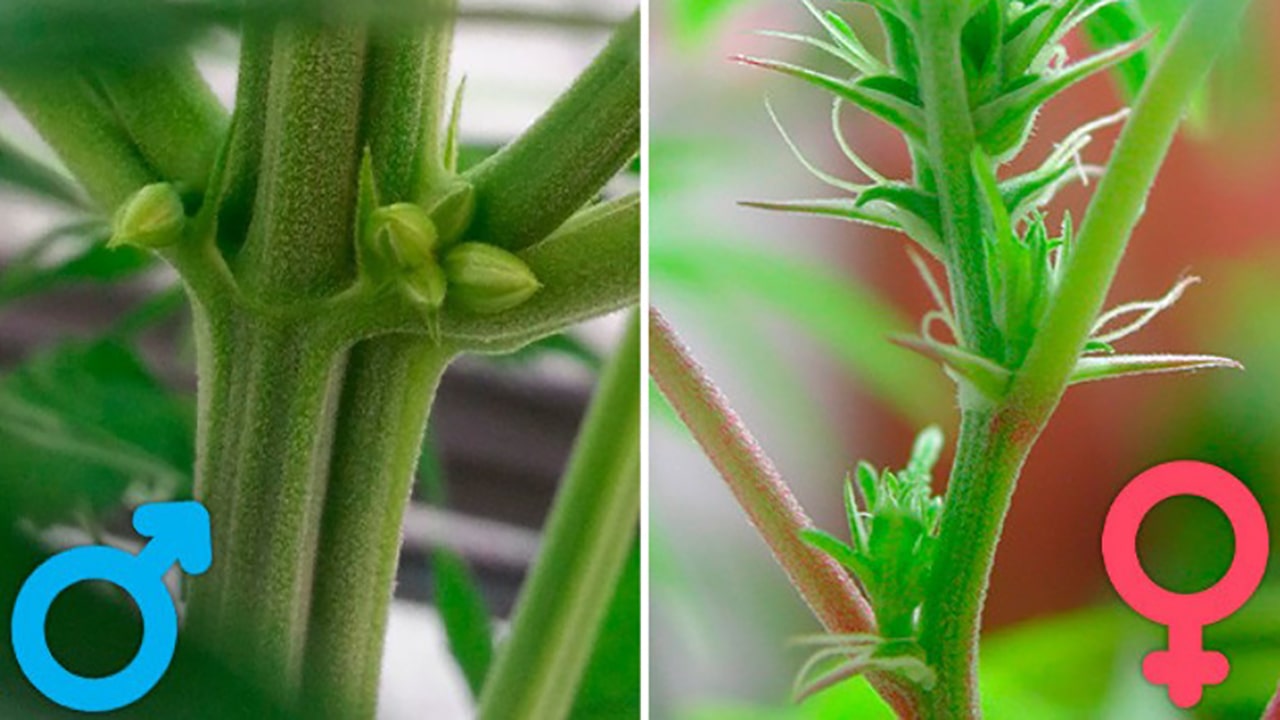
How do you avoid male plants?
To minimize the risk of male cannabis plants appearing and to increase the yield, it is important to consider several factors: the choice of seeds, the right growing conditions and timely determination of the sex of marijuana.
Selecting Seeds
Buying quality seeds is key to reducing the likelihood of male plants. There are three main types of seeds, each with a different chance of developing a male or female plant:
| Seed type | Probability of male plants appearing | Peculiarities |
| Feminized | 0–1% | Genetically engineered to produce only female plants. |
| Regular | 50% | Normal seeds that produce equal numbers of male and female plants. |
| Autoflowering | 0–1% (if feminized) | They begin flowering on their own without changing the light regime. |
If the goal is to get the maximum yield, it is better to choose feminized seeds. They eliminate the appearance of male bushes and eliminate the need to remove them.
Optimal growing conditions
Improper care can cause even feminized seeds to produce male or hermaphrodite plants. Therefore, it is important to maintain a favorable environment.:
Temperature and humidity
- Optimum temperature: 22–26°C.
- Humidity: 60–70% in the early vegetative period, 40–50% before flowering.
- Sudden changes in temperature can cause stress, which increases the risk of male plants forming.
Lighting
- During the growing season - 18/6 or 20/4 (light/dark hours).
- It is important to avoid light leaks at night, as this can cause stress to the plant and provoke the appearance of male or hermaphrodite bushes..
Top dressing and fertilizers
- During the growing season, plants need an increased amount of nitrogen (N).
- If there is a lack of nutrients or an excess of fertilizers, the plant may experience stress, which increases the likelihood of developing male bushes.
- Use high-quality fertilizers suitable for the growing season, with an NPK (nitrogen, phosphorus, potassium) balance.
Timely removal of male plants
Determining the sex of cannabis plants before flowering allows you to get rid of male plants in time. Removal should be done carefully to avoid accidental pollination of female plants..
- Check the plant for sexual characteristics every 2-3 days.
- If pollen sacs are found, remove the bush from the growbox or greenhouse immediately.
- If the plant is located near female bushes, it is better to carefully remove it without shaking the stems so as not to spread the pollen.
Conclusion
To avoid the appearance of male cannabis bushes, it is important to choose the right seeds, control the growing conditions and determine the sex of the plant in time. Using feminized seeds, high-quality fertilizers and observing the light regime will help to get a high yield without the risk of pollination.
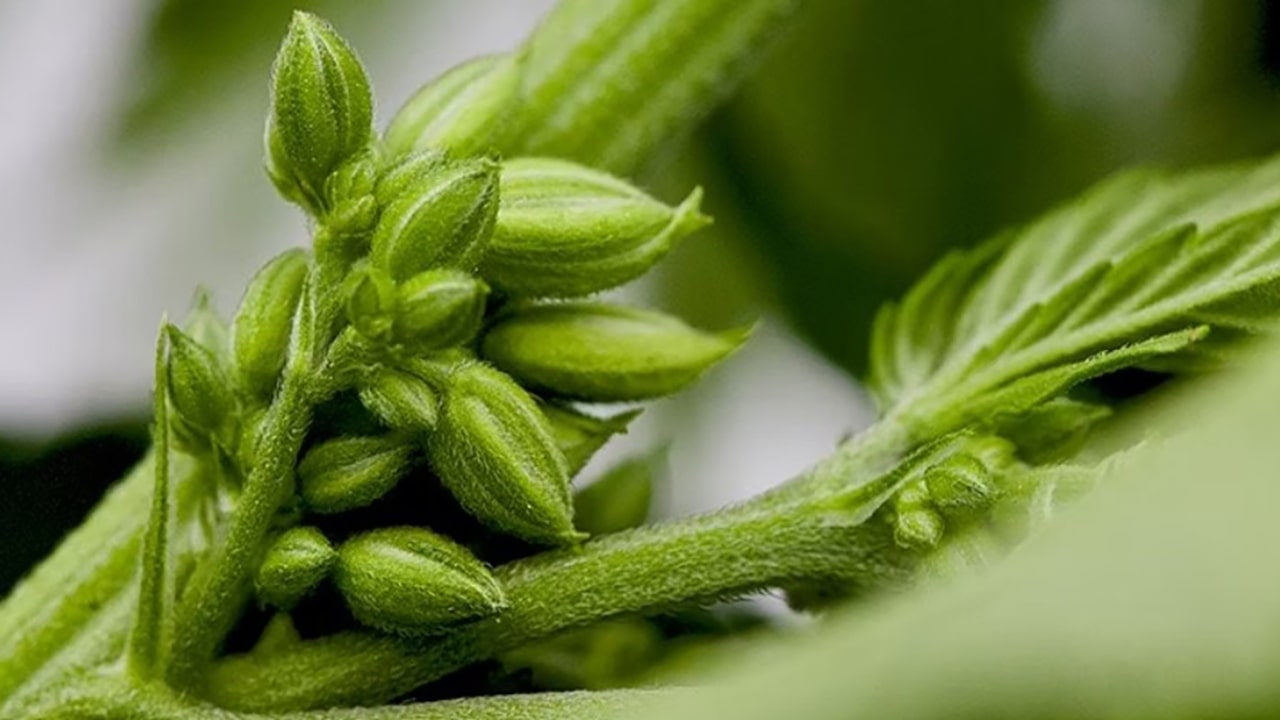
Attention! Errors Seeds does not encourage you to grow cannabis and does not promote it in any way. Cultivation is prohibited by the legislation of Ukraine. The article is of scientific and introductory interest only.
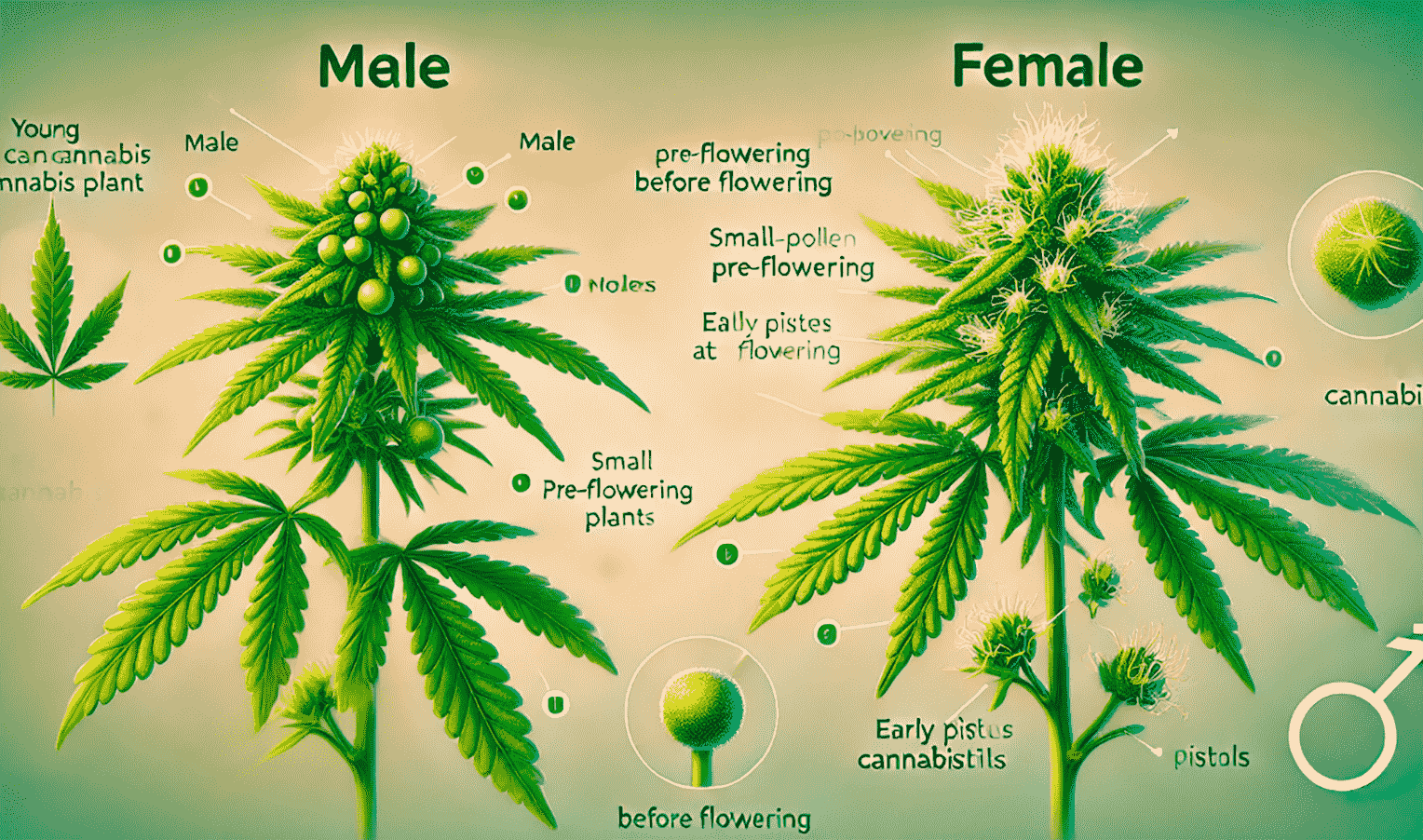
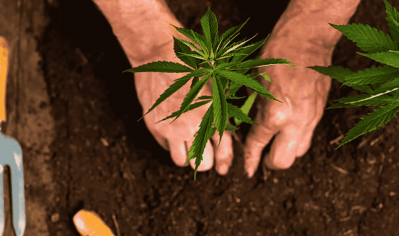
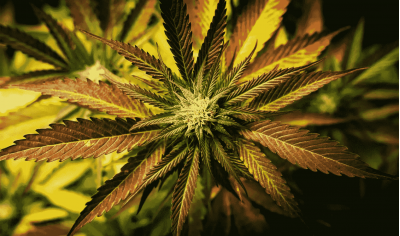
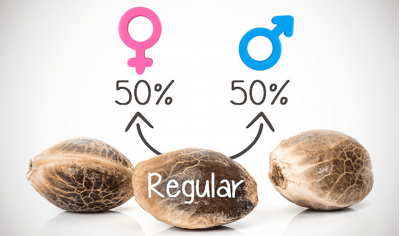
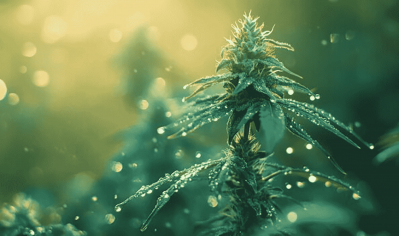
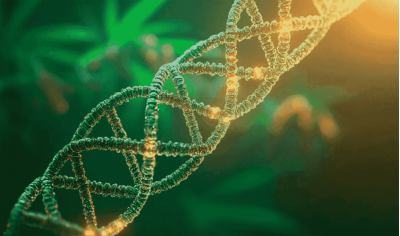
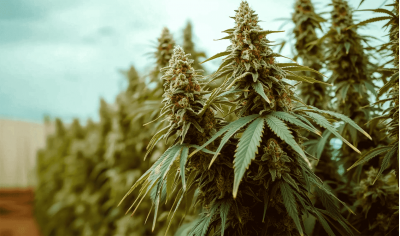
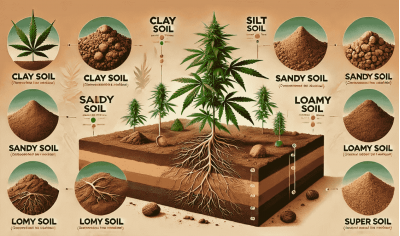
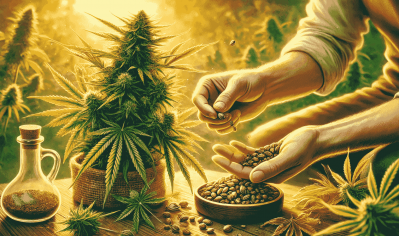
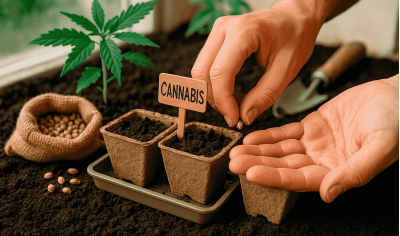
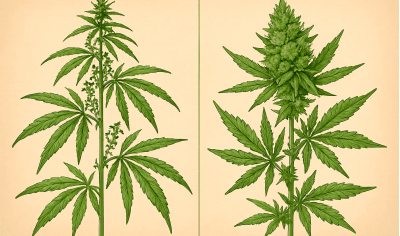

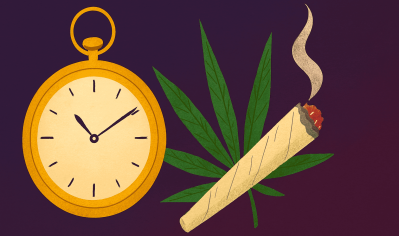


Write a comment